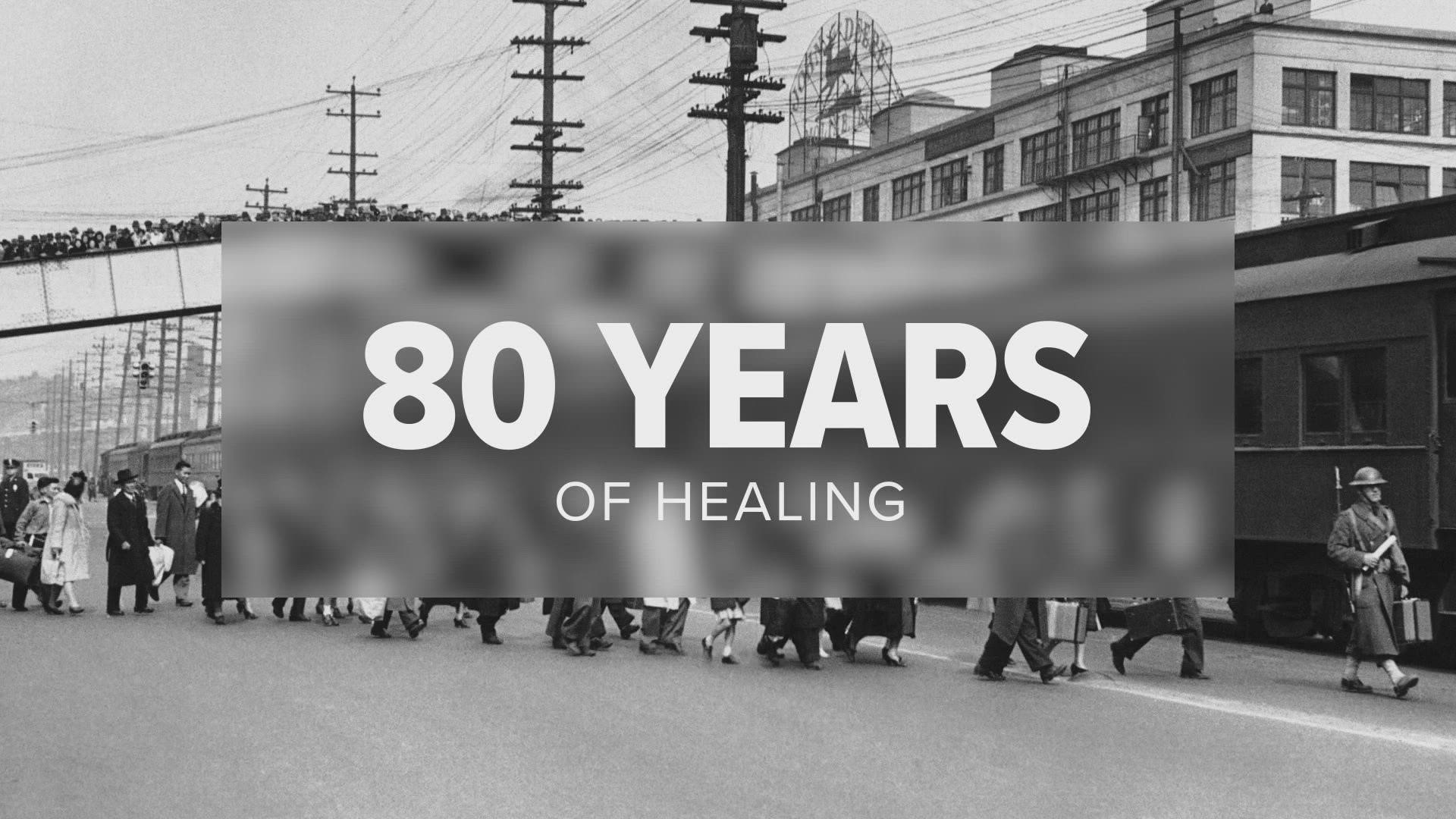SEATTLE — This year marks the 80th anniversary of President Franklin D. Roosevelt signing Executive Order 9066. The order, which was signed shortly after the attack on Pearl Harbor, led to the forcible removal and imprisonment of more than 120,000 Japanese Americans and immigrants.
The order impacted thousands of families living in Washington state, and the effects are still felt today.
On March 30, 1942, more than 200 Japanese Americans living on Bainbridge Island were removed from their homes and forced into internment camps during WWII. It was the first community in the country where the order was enforced.
Most Japanese Americans were allowed to return to their homes by 1945. It took more than 40 years for the U.S. government to issue a formal apology to the remaining 80,000 survivors, but it came too late for the many survivors who had since passed away.
Executive Order 9066 could be considered one of the most shameful policy decisions of the U.S. government, and the way many journalists and media outlets covered the event back then wasn’t much better.
Though the way historical events were covered in the past cannot be rewritten, a project by The Seattle Times, called "A1 Revisited," is reexamining their past coverage of significant historical events in an effort to take accountability and learn so future events can be covered differently.
“It's an accountability project,” said Crystal Paul, the project editor for A1 Revisited. “We decided to start looking into our archives and finding the stuff that we did wrong.”
The first historical event the project examined was the paper’s coverage of Japanese Americans being forced from their homes on Bainbridge Island. Paul said the team, which consists of about 12 staff from multiple departments, revisited the paper’s front-page story word for word from March 30, 1942, and found “we really missed the mark.”
Now, the newspaper is highlighting problems in their past coverage like racist depictions, photos from the war that influenced the narrative, and staged portraits that inaccurately depicted internment.
“We're looking back, you know, 80 years in this case, and finding that in 1942 we didn't do a great job of serving the communities that we are supposed to serve,” explained Paul. “We used racist slurs, we used inaccurate language, there were a lot of errors, a lot of things that we regret today that we did in covering the 1942 incarceration of Japanese Americans that happened right here in Bainbridge Island.”
Paul said the team worked with the nonprofit Densho, a Seattle-based Japanese American history group, to help analyze the coverage from WWII to "make sure that we were getting this [project] right."
“The primary goal is obviously for people whose families were affected to understand that we regret what happened then and that we see them, and we hope that we can repair that community trust going forward,” said Paul.
Paul said the team worked for about “six to eight months” from conception to executing and publishing "A1 Revisited."
“We saw [this year] was the 80th anniversary of the 1942 forced evacuation of residents from Bainbridge Island and we thought this is something that we definitely didn't get right in 1942,” explained Paul. “This is a place to begin taking accountability.”
While revisiting the coverage, Paul said one of the things the team found was the Times' coverage “mostly centered on an orderly evacuation” and the white residents of Bainbridge Island, instead of the Japanese Americans who were being forced from their homes.
She said while their coverage, along with several other outlets’ coverage at the time, used inaccurate language and ran editorials with one-sided quotes about orderly evacuations, the Bainbridge Island Review was a local media organization “that seemed to get it right.” The news outlet condemned the forced evacuations early on and followed residents to the internment camp in Puyallup to help tell their stories.
“What language you use and who you center [in coverage] matters,” said Paul. “This project, I think, really shows that.”
Paul joined the Times as a reporter in 2018 and said she talked with others at the paper about doing a “project that looked back at the ways that our institution had gone wrong in the past.” She said she was initially inspired to do an accountability project after National Geographic published an apology letter for some of the racist images and languages it had used in the past.
So how has the community responded? While there has been some negative feedback, Paul said there has also been positive feedback.
“We've gotten a lot of positive feedback,” said Paul. “I think, you know, the most touching was just people literally saying, 'Thank you. I had family who was affected by this, and I feel seen, and thank you for taking accountability.'”
But this could just be the beginning. Paul said she and the staff don’t want to get ahead of themselves on what topic or event is next for the project. While there will be discussions about the next installment, the team also wants readers' input about what installment should be next.
“It's my hope that as we look back, we're also looking forward; we're looking at our present-day coverage, and we're learning from what we did in the past and just always trying to be better journalists,” said Paul.

